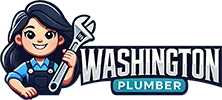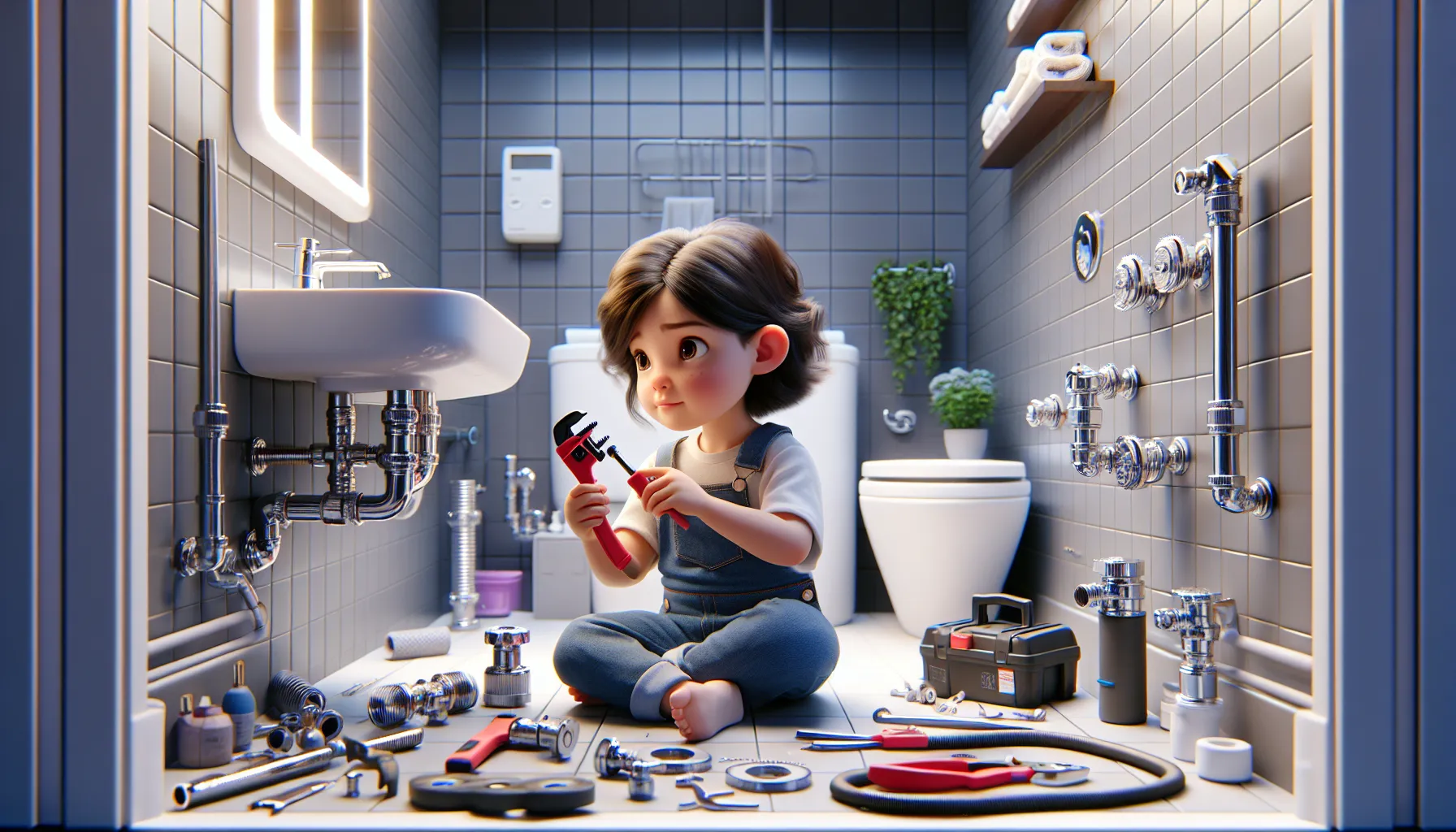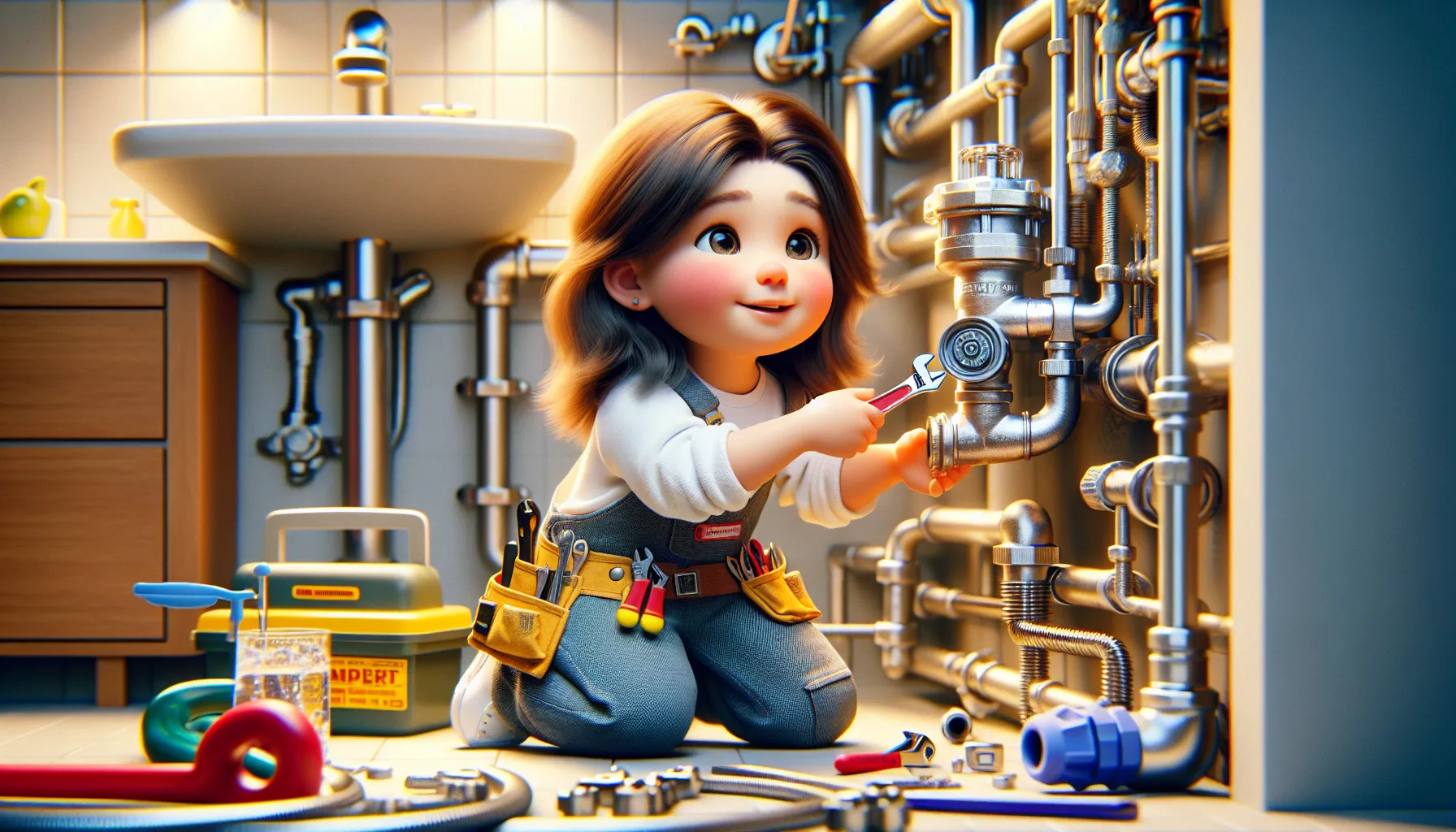Most households deal with common plumbing issues that can range from minor inconveniences to major problems. From leaky faucets to burst pipes, residential plumbing can present a variety of challenges for homeowners. However, with the right knowledge and solutions, these issues can be addressed effectively.
One of the most dangerous plumbing issues in a home is a burst pipe. This can lead to flooding, water damage, and even mold growth if not addressed quickly. On the other hand, regular maintenance and inspections can help prevent these issues from occurring in the first place. By being aware of common plumbing problems and knowing how to properly address them, homeowners can save time, money, and hassle in the long run.
Key Takeaways:
- Clogged Drains: One of the most common issues in residential plumbing, can often be resolved with DIY methods like using a plunger or a drain snake.
- Leaky Faucets: Wasting water and causing inconvenience, fixing leaky faucets may require replacing washers, O-rings, or other internal components.
- Low Water Pressure: Could be due to sediment buildup in pipes, aerator issues, or water leaks, and might necessitate professional inspection for a proper diagnosis.
- Running Toilets: Typically caused by a faulty flapper or valve seal, leading to water wastage and increased water bills if left unresolved.
- Water Heater Problems: Issues like inadequate hot water, strange noises, or leaks may indicate problems with the heating element, thermostat, or sediment buildup affecting the unit’s efficiency.
Understanding Your Plumbing System
One crucial aspect of maintaining your home is understanding the plumbing system. Without a functional plumbing system, daily tasks like showering, washing dishes, and using the toilet can become challenging. By familiarizing yourself with the composition and main components of your residential plumbing system, you can be better prepared to identify and address common issues that may arise.
Composition of a Residential Plumbing System
Plumbing systems in residential buildings are typically designed to carry clean water into the home and remove wastewater. The system comprises a network of pipes, fittings, fixtures, and appliances that work together to ensure a consistent flow of water throughout the house. Understanding how these components interact is crucial in maintaining the efficiency and functionality of your plumbing system.
Identifying the Main Components
Main components of a residential plumbing system include pipes, fixtures, valves, and water heaters. Pipes are the channels through which water flows, while fixtures such as sinks, toilets, and bathtubs are the points of use. Valves control the flow of water, allowing you to shut off water to specific areas when needed. Water heaters heat water for various household uses, providing convenience and comfort.
When identifying the main components of your plumbing system, it is crucial to locate the main shut-off valve. This valve can be crucial in emergencies, allowing you to quickly stop the flow of water in the event of a leak or burst pipe. Familiarize yourself with the location of this valve and ensure that it is in good working condition to prevent potential water damage in your home.
Common Plumbing Issues in the Home
Leaky Faucets and Fixtures
If you notice any dripping or leaking from your faucets or fixtures, it’s crucial to address the issue promptly. Not only can a persistent leak waste a significant amount of water over time, but it can also lead to more severe damage if left unchecked. Leaky faucets are often caused by worn-out washers or seals that need to be replaced. By fixing these small issues promptly, you can prevent bigger problems down the line.
Clogged Drains and Toilets
Issues with clogged drains and toilets are common in residential plumbing. Hair, soap scum, food particles, or even tree roots can cause blockages in drains and pipes. Using a plunger or a drain snake can often help clear minor clogs. However, for more stubborn blockages, it’s best to seek professional help. Ignoring a clog can lead to backups, pipe damage, and even sewage leaks into your home.
Low Water Pressure
One common cause of low water pressure in homes is mineral buildup in pipes or fixtures. Over time, minerals like calcium and magnesium can accumulate and restrict the flow of water. Another reason for low water pressure could be a malfunctioning pressure regulator or a leak in the plumbing system. If you experience consistently low water pressure throughout your home, it’s important to investigate the root cause to ensure proper water flow.
Running Toilets
It’s important to address running toilets promptly to avoid wasting water and potential damage to your toilet. A running toilet is often caused by a faulty flapper or fill valve. These components can wear out over time and prevent the toilet from filling and shutting off properly. By fixing a running toilet promptly, you can save water and prevent costly water bills.
Faulty Water Heaters
Plus, if you notice issues with your hot water supply, it could indicate a problem with your water heater. Sediment buildup, a faulty heating element, or a broken thermostat can all cause issues with water temperature and availability. Regular maintenance of your water heater can help prevent these problems and ensure you always have access to hot water when needed.
Burst Pipes
Faulty pipes can lead to a serious plumbing emergency in your home. Freezing temperatures, corrosion, or high water pressure can weaken pipes over time, leading to cracks or bursts. A burst pipe can cause significant water damage and mold growth if not addressed immediately. If you notice signs of a burst pipe, such as water stains, damp drywall, or an unexplained increase in your water bill, it’s crucial to shut off the main water supply and contact a plumber right away.
Preventive Measures and Maintenance
All residential plumbing systems require periodic inspection and maintenance to prevent issues from escalating into expensive repairs. By following simple preventive measures and regular maintenance routines, homeowners can ensure the longevity and efficiency of their plumbing systems.
Periodic Inspection Checklist
On a regular basis, homeowners should conduct a comprehensive inspection of their plumbing system to identify any potential issues. Check for leaks in pipes, faucets, and toilets. Look for signs of water damage on walls, ceilings, or floors. Inspect water pressure in faucets and flush toilets to ensure proper functionality. Keep an eye out for any unusual odors or noises coming from the plumbing system.
Best Practices for Plumbing Maintenance
Maintenance is crucial in preventing major plumbing problems. All homeowners should implement regular maintenance practices to keep their plumbing system in top condition. This includes scheduling professional inspections at least once a year, cleaning drains regularly to prevent clogs, and insulating exposed pipes to prevent freezing in winter. Additionally, being mindful of what is flushed down toilets and poured down drains can prevent blockages.
Maintenance Checklist: Implementing a preventive maintenance checklist for your plumbing system can save you time and money in the long run. Regular maintenance not only prevents costly repairs but also ensures the safety and efficiency of your home’s plumbing system. By following these best practices and staying proactive in your maintenance efforts, you can avoid potential plumbing disasters.
Troubleshooting and Basic Repairs
Tools and Supplies You’ll Need
Keep a few crucial tools and supplies handy for tackling common plumbing issues in your home. Some crucial items to have in your toolbox include a plunger, pipe wrench, plumber’s tape, adjustable wrench, screwdriver set, and a plumbing snake. Additionally, stock up on supplies like washers, O-rings, Teflon tape, and plumbing glue. Having these basics on hand will equip you to address minor plumbing problems swiftly and effectively.
Step-by-Step Guide for Simple Repairs
Troubleshooting and fixing minor plumbing problems yourself can save you time and money. With a clear guide to follow, you can confidently handle issues like leaky faucets, clogged drains, and running toilets. Use the table below for a step-by-step breakdown of simple repairs that you can do on your own.
| Issue | Repair |
| Leaky Faucet | Replace the Faucet Washer |
| Clogged Drain | Use a Plunger or Plumbing Snake |
| Running Toilet | Adjust or Replace the Flapper Valve |
For instance, a leaky faucet is often caused by a worn-out washer that needs to be replaced. By following the simple steps outlined for each issue, you can address the problem effectively and prevent further damage to your plumbing system.
When to Call a Professional
Troubleshooting common plumbing issues is practical, but there are times when it’s best to call a professional. Complicated problems like burst pipes, extensive water leaks, or sewer line blockages require the expertise of a licensed plumber. If you’re unsure about the complexity of the issue or lack the necessary skills and tools to fix it, seek professional help to avoid potential hazards and ensure a thorough repair.
Need expert advice, such as when dealing with major plumbing projects or when safety is a concern, don’t hesitate to contact a qualified plumber who can provide professional assistance and ensure your home’s plumbing system is functioning correctly.
Advanced Plumbing Problems and Solutions
- Sewer System Backups
- Experience: Look for a plumber with years of experience in the industry.
- License and Insurance: Ensure the plumber is properly licensed and insured to protect yourself and your property.
- References: Ask for references or read online reviews to gauge the quality of their work.
| Issue | Solution |
| Clogged sewer lines | Hydro jetting or trenchless pipe repair |
| Tree root infiltration | Root cutting or pipe relining |
Advanced Sewer System Backups
Advanced plumbing problems like sewer system backups can be a homeowner’s nightmare. When sewer lines become clogged or infiltrated with tree roots, significant damage can occur. Addressing these issues promptly with solutions like hydro jetting or trenchless pipe repair can prevent costly repairs and extensive cleanup.
Sump Pump Failures
An unforeseen sump pump failure during heavy rains can result in a flooded basement, causing damage to belongings and potential mold growth. Regular maintenance and testing of the sump pump system are crucial to avoid such disasters.
Water Heater Issues and Replacement
Replacement of a failing water heater is inevitable at some point in a home’s lifespan. Rusty water, strange noises, or inconsistent heating are signs that indicate the need for a new water heater. Consulting a professional plumber for water heater replacement ensures proper installation and optimal performance.
Whole-House Repiping
Sump up the older pipes in your home can lead to issues like low water pressure, discolored water, or frequent leaks. Heater, replacing the entire piping system with modern materials improves water flow and quality, preventing future plumbing problems.
Cost Management and Budgeting for Plumbing Work
Once again, it’s important to consider the costs associated with residential plumbing work to ensure effective budget management. By understanding typical repair expenses and planning for major plumbing issues, homeowners can prepare financially for any necessary work that may arise.
Estimating Average Repair Costs
An important aspect of cost management in residential plumbing is estimating average repair costs. On average, homeowners can expect to pay anywhere from $175 to $450 for common plumbing repairs such as fixing a leaky faucet, unclogging a drain, or replacing a toilet. However, more complex issues like repairing a burst pipe or replacing a water heater can cost anywhere from $1,000 to $4,000.
Planning for Major Plumbing Expenses
Repair planning for major plumbing expenses is crucial to avoid financial strain when faced with significant issues. It’s important for homeowners to set aside funds for unexpected emergencies, as well as to consider investing in a home warranty or plumbing service plan to help cover the costs of major repairs. Regular maintenance can also help prevent costly plumbing problems in the future.
Navigating Emergencies and Hiring Professionals
After years of wear and tear, even the most well-maintained plumbing systems can encounter issues that require immediate attention. Knowing how to handle a plumbing emergency and choosing the right professional to assist you can make all the difference in minimizing damage and costs in the long run.
How to Handle a Plumbing Emergency
Plumbing emergencies can range from burst pipes to overflowing toilets, causing extensive damage to your property if not addressed promptly. In the event of a plumbing emergency, it is crucial to remain calm and act swiftly. First and foremost, locate the main water shut-off valve to stop the flow of water and prevent further damage. Then, contact a licensed plumber to assess and resolve the issue promptly.
Tips for Choosing the Right Plumber
On top of these considerations, make sure to obtain detailed quotes from multiple plumbing professionals before making a decision. Knowing the reputation and reliability of the plumber you hire can provide peace of mind that the job will be done effectively and efficiently.
Building a Relationship with a Trusted Professional
To ensure a seamless experience with plumbing issues, it is crucial to build a relationship with a trusted plumbing professional. By working with the same plumber for routine maintenance and unexpected repairs, you can establish a level of trust and familiarity that will benefit both parties in the long term.
Trusted plumbers who are familiar with your property can offer personalized solutions and recommendations based on their knowledge of your plumbing system. This relationship can save you time and money by avoiding unnecessary repairs and ensuring that your plumbing stays in optimal condition.
FAQ
Q: What are the common issues in residential plumbing?
A: The common issues in residential plumbing include leaky faucets, clogged drains, running toilets, low water pressure, and water heater problems.
Q: How can I fix a leaky faucet?
A: To fix a leaky faucet, first, turn off the water supply. Then, replace the worn-out washer or cartridge in the faucet. If the issue persists, consider seeking help from a professional plumber.
Q: What should I do if I have a clogged drain?
A: If you have a clogged drain, start by using a plunger to try and clear the blockage. If that doesn’t work, you can use a drain snake or a mixture of baking soda and vinegar to break down the clog. For stubborn clogs, it’s best to contact a plumber.
Q: How do I fix a running toilet?
A: A running toilet is often caused by a faulty flapper or fill valve. You can try adjusting the chain length or replacing these parts to fix the issue. If the problem persists, it’s recommended to call a professional plumber.
Q: What should I do if I have low water pressure in my home?
A: Low water pressure can be caused by various issues such as a clogged aerator, pipe corrosion, or water leaks. Check for these issues and clean or replace the affected parts to restore water pressure. If the problem continues, consult with a plumber to determine the root cause.


